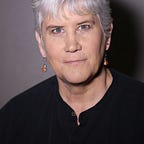Myasthenia Gravis, Muscular Dystrophy, Muscle Disorders, Integrative Medicine, Integrative Manual Therapy and Health Coaching
A Natural Health and Wellness Essay.
What are the benefits of complementary medicine for genetic or autoimmune muscle disorders, including Myasthenia Gravis and Muscular Dystrophy?
There is some evidence of the benefits of Integrative Manual Therapy, homeopathy, acupuncture, exercise and gluten elimination to improve immune function and for increasing physical strength.
Muscle Disorders and Protein
Protein dysfunctions can contribute to muscle dysfunctions including both genetic diseases and autoimmune diseases. And not all proteins are the same.
“Muscle may suffer from a number of diseases or disorders, some being fatal. Although no single method may be used to identify all diseases, recognition depends on the following diagnostic procedures: history and clinical examination, blood biochemistry, electromyography, muscle biopsy, nuclear magnetic resonance, measurement of muscle cross-sectional area, tests of muscle function, provocation tests, and studies on protein turnover.
Among the most common diseases in muscle are the muscular dystrophies, in which the newly identified muscle protein dystrophin is either absent or present at less than normal amounts in both Duchenne and Becker’s muscular dystrophy.” Pearson, A. M. and R. B. Young (1993). “Diseases and disorders of muscle.” Adv Food Nutr Res 37: 339–423.
“Other major diseases of muscle include the inflammatory myopathies and neuropathies. Atrophy and hypertrophy of muscle and the relationship of aging, exercise, and fatigue all add to our understanding of the behavior of normal and abnormal muscle. Some other interesting related diseases and disorders of muscle include myasthenia gravis, muscular dysgenesis, and myclonus.
Disorders of energy metabolism include those caused by abnormal glycolysis and by the acquired diseases of glycolysis (disorders of mitochondrial oxidation). Still other diseases associated with abnormal energy metabolism include lipid-related disorders and myotonic syndromes.
Diseases of the connective tissues include those of nutritional origin (scurvy, lathyrism, starvation, and protein deficiency), the genetic diseases (dermatosparaxis, Ehlers-Danlos syndrome, osteogenesis imperfecta, Marfan syndrome, homocystinuria, alcaptonuria, epidermolysis bullosa, rheumatoid arthritis in humans, polyarthritis in swine, Aleutian disease of mink, and the several types of systemic lupus erythematosus) and the acquired diseases of connective tissues (abnormal calcification, systemic sclerosis, interstitial lung disease, hepatic fibrosis, and carcinomas of the connective tissues).” Pearson, A. M. and R. B. Young (1993). “Diseases and disorders of muscle.” Adv Food Nutr Res 37: 339–423. [Abstract]
Exercise: Notice Your Proteins
Make a list of the sources of protein in your diet.
Do you eat meat?
Do you eat vegetable proteins?
Do you eat nuts?
Do you eat eggs?
Does your protein come from dairy?
Do you eat gluten, which is the protein component of wheat, rye and barley?
How are the proteins cooked?
How old is it?
What else is along with the proteins?
Do you have allergies to any of your proteins?
Do what you can to improve the quality of the proteins you eat.
Exercise: Improve Your Digestive System
It is important to have enough hydrochloric acid in your stomach in order to properly digest proteins. You want to have enough in the stomach and none refluxing back up to the esophagus. You also need the pancreas to be functioning and dumping bicarbonate into the first part of the small intestine (duodenum) to neutralize the acid from the stomach so you don’t get ulcers. These are all components of protein digestion and balance in the system. Here are three of the exercises from Sharon W Giammatteo, developer of Integrative Manual Therapy.
An Exercise Program for Organ Relief
These exercises will provide relief from discomfort. They are not meant to treat the organ. They are only meant to decrease muscle spasm, often improve motion, and generally to alleviate discomfort. All of these exercises are performed in STANDING.
These exercises can be performed often. There are no precautions. All of the exercises can be performed, or the exercise/s of choice can be performed.
Always place a hand on the body over the organ.
The exercises will take ONE Minute each.
If you have any questions or concerns, please consult with your health care provider.
Esophagus (Center of Upper Chest)
1. Place Either hand on the organ.
2. Bend the right knee slightly.
3. Lift the right shoulder girdle (shoulder shrug).
4. Bring the left shoulder girdle forward.
5. Tuck the chin in.
Stomach (Bottom of Rib Cage slightly on Left)
1. Place Either hand on the organ.
2. Place the right foot 5 inches in front of the left foot.
3. Bend the right knee slightly.
4. Rotate the head and neck to the right slightly.
5. Bring the left ear towards the left shoulder.
6. Look up slightly.
Duodenum (Below Liver on Right)
1. Place Either hand on the organ.
2. Bend the left knee slightly.
3. Bring the left shoulder girdle forward slightly.
4. Bring the right shoulder girdle backward slightly.
5. Look up towards the ceiling..
Originally Published on LinkedIn https://www.linkedin.com/in/kimberlyburnham/detail/recent-activity/posts/ on July 9, 2014
